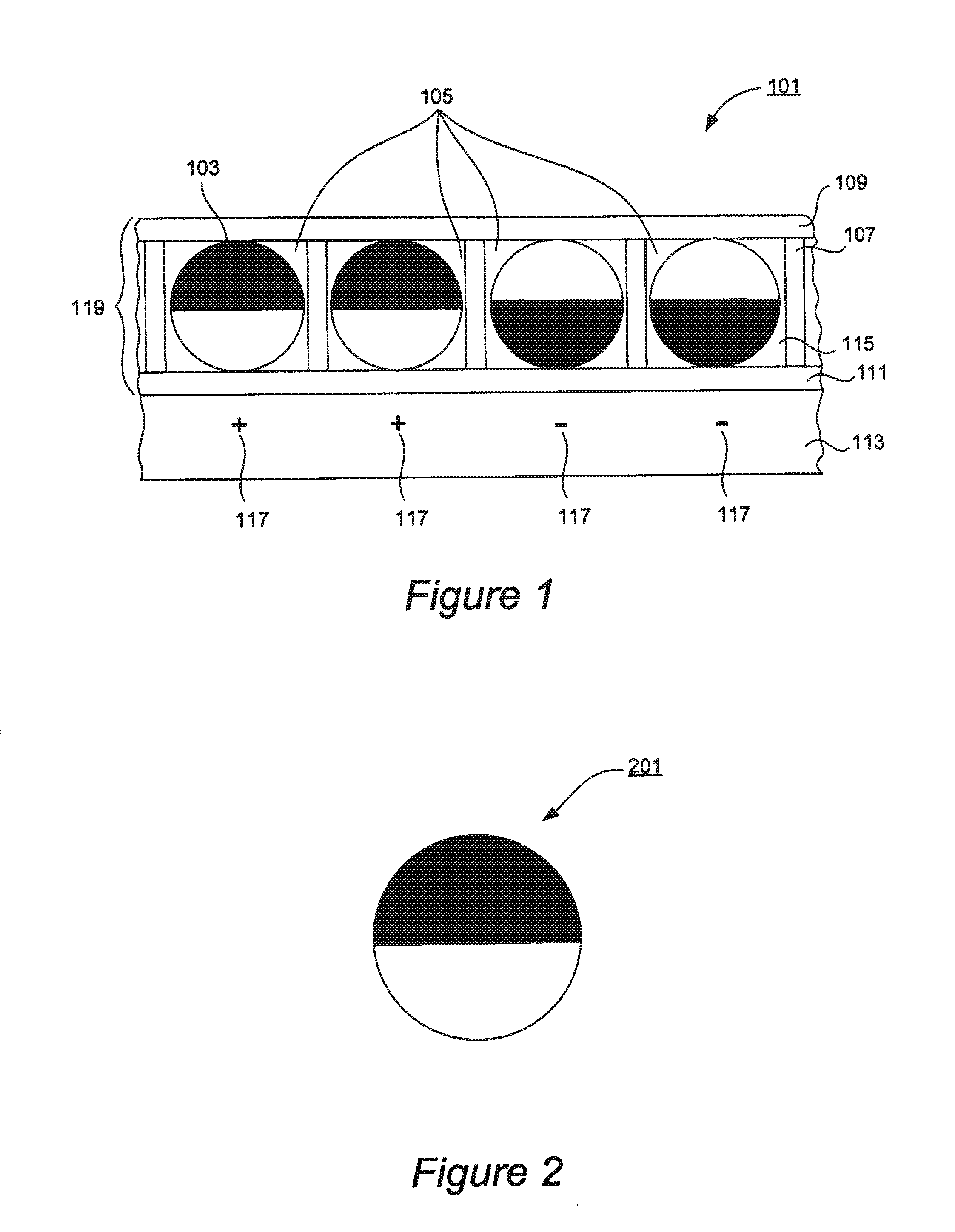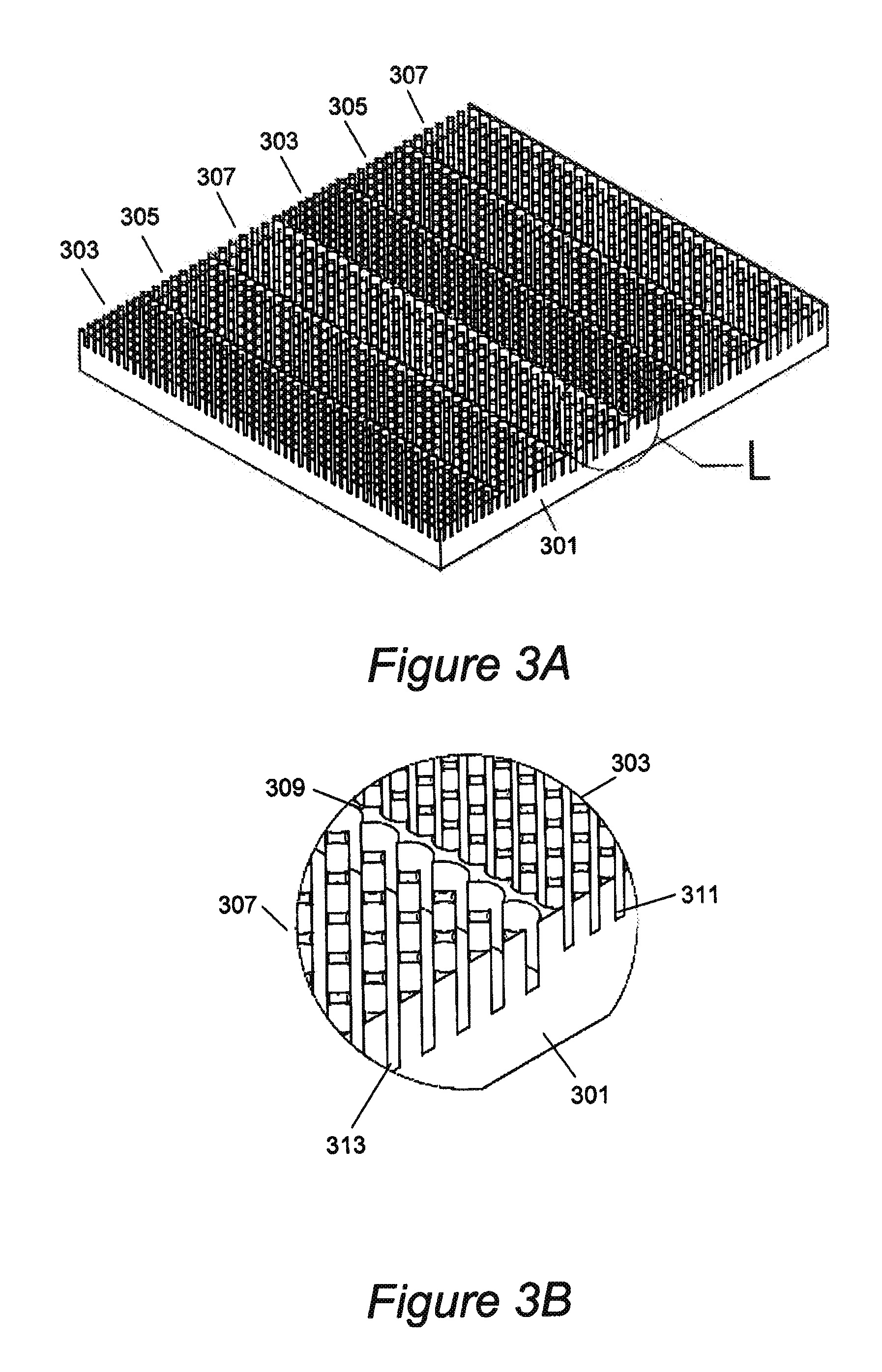Color Rotating Element Displays
a technology of rotating elements and display elements, applied in the field of visual displays, can solve the problems of not allowing fluid communication between the regions, the mechanism for driving the electrodes will become more complex to ensure, and other applications may not tolerate such wide variance, so as to achieve cost-effective manufacturing, facilitate manufacturing, and improve the effect of brightness and contras
- Summary
- Abstract
- Description
- Claims
- Application Information
AI Technical Summary
Benefits of technology
Problems solved by technology
Method used
Image
Examples
Embodiment Construction
[0052]Color rotating element displays provided herein can be used for a wide variety of applications, including e-books, cell phones and other portable electronics, signage, rigid flat-panel display screens, billboards, color-changing fabrics, specialty films and other applications. In some embodiments, color rotating element displays can be written on and erased, as well as can retain information for a long period of time in the absence of an electric field or other external retaining force. In some embodiments, provided electronic paper displays are preferably thin, lightweight, and durable which allows them to be rolled or folded without the loss of information.
[0053]In some embodiments, provided displays of all four types make use of distinct sets of rotatable elements that respond differently to electromagnetic stimulus. For example, in some embodiments, elements with distinct optical properties will have matched and distinct responses to an electromagnetic stimulus. In one exa...
PUM
 Login to View More
Login to View More Abstract
Description
Claims
Application Information
 Login to View More
Login to View More - R&D
- Intellectual Property
- Life Sciences
- Materials
- Tech Scout
- Unparalleled Data Quality
- Higher Quality Content
- 60% Fewer Hallucinations
Browse by: Latest US Patents, China's latest patents, Technical Efficacy Thesaurus, Application Domain, Technology Topic, Popular Technical Reports.
© 2025 PatSnap. All rights reserved.Legal|Privacy policy|Modern Slavery Act Transparency Statement|Sitemap|About US| Contact US: help@patsnap.com



